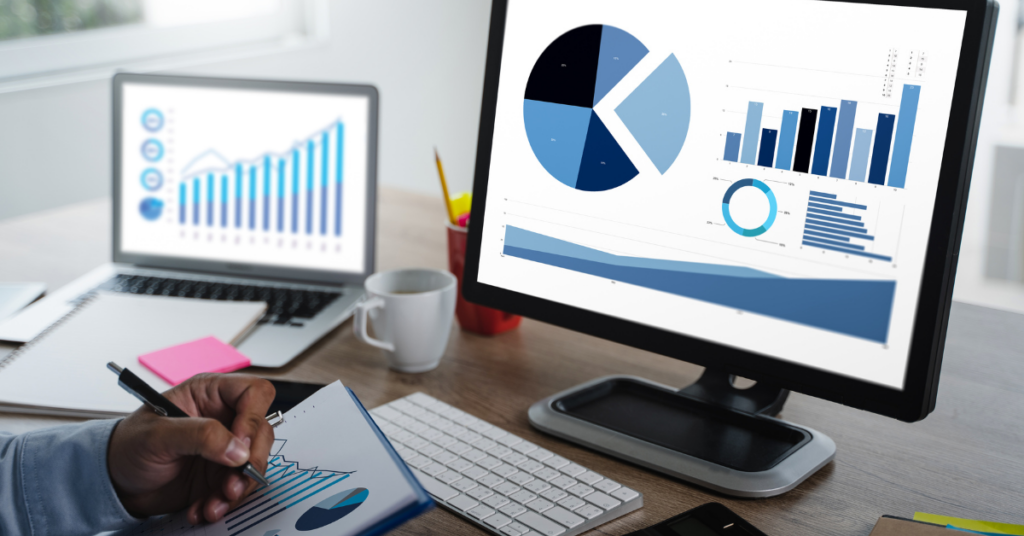What is Performance Marketing?
Performance marketing is a results-based digital strategy where businesses only pay for specific actions like clicks, leads, or purchases. Instead of spending blindly on ads, brands pay only when performance goals are met. This model allows for higher efficiency, better ROI, and scalable campaigns.
In today’s competitive online space, Results Driven Marketing stands out as a smarter, data-driven approach especially for startups and growing businesses.
Why Choose Performance Marketing for Your Business?
Performance marketing gives you full control over your budget and lets you measure success through detailed metrics. Here’s why it’s the go-to strategy for modern marketers:
- Pay for Results Only
- Track Every Click, Lead, or Sale
- Maximize ROI and Minimize Waste
- Scale Based on Real Time Data
Key Components of Results-Driven Marketing
To fully grasp how results-driven marketing delivers measurable success, it’s essential to understand its core elements. This approach focuses on performance, data, and ROI and depends on a system of coordinated roles and tools working together. Here are the key components that make it all happen:
1. Advertisers
At the heart of results-driven marketing are the advertisers typically brands, companies, or service providers looking to increase awareness, drive traffic and boost sales. These businesses invest in digital marketing campaigns to reach their target audience through various channels such as search engines, social media, or affiliate platforms.
2. Publishers or Affiliates
Publishers (also known as affiliates) are partners who promote the advertiser’s products or services across their owned platforms including websites, blogs, social media accounts, or email newsletters. In exchange, they earn a commission for each action (click, lead, or sale) generated through their promotional efforts.
3. Affiliate Networks
Affiliate networks act as intermediaries that connect advertisers with a wide network of affiliates. Popular platforms like Impact, CJ Affiliate, ShareASale, and others provide tools for managing relationships, distributing offers, handling payments, and ensuring transparency. These networks simplify the process of finding, tracking, and rewarding affiliate partners.
4. Tracking Tools
Tracking and analytics tools are essential to monitor performance and measure success. Tools such as Google Analytics, Facebook Pixel, and UTM parameters allow advertisers and publishers to track user behavior, conversions, and ROI in real-time. These insights help refine marketing strategies, optimize budgets, and improve overall campaign effectiveness.
Types of Performance Marketing Channels
Performance marketing is driven by measurable outcomes such as clicks, leads, and conversions. Here are the most effective performance based channels businesses use to reach their audience and maximize ROI:
1. Search Engine Ads (PPC)
Pay Per Click (PPC) advertising, most commonly through platforms like Google Ads, allows businesses to show ads on search engine results pages. Advertisers only pay when a user clicks on the ad, making it a cost-effective way to target users actively searching for specific products or services. Keywords and audience targeting play a crucial role in optimizing these campaigns.
2. Social Media Marketing
Social platforms like Facebook, Instagram, LinkedIn, and TikTok offer advanced advertising tools based on CPC (cost per click) or CPA (cost per acquisition) models. These channels allow for detailed audience targeting based on demographics, interests, and behavior, enabling brands to reach users with high conversion potential. Social media campaigns are ideal for both awareness and direct response goals.
3. Affiliate Marketing
In affiliate marketing, businesses partner with bloggers, influencers, or publishers who promote their products or services in exchange for a commission per lead, sale, or action. It’s a low-risk, high-reward model that leverages third-party credibility and audience reach to drive performance. Affiliate platforms and tracking tools ensure proper attribution and payout.
4. Native Ads & Display Marketing
Native advertising blends promotional content seamlessly into the user experience on platforms like Taboola, Outbrain, and Google Display Network. These ads are often shown on news websites or blogs, and typically use performance-based pricing like CPC or CPM (cost per thousand impressions). They are excellent for content-driven marketing and expanding top-of-funnel visibility.
How Performance Marketing Works in Real Life
Let’s say you run an online clothing store. You partner with an affiliate and launch a Meta (Facebook) ad campaign.
- Goal: Drive online purchases
- Channel: Meta Ads + Affiliate Marketing
- Tracking: UTM tags and Google Analytics
- Result: You only pay when a sale is made
This is performance marketing in action driven by results and designed for scale.
Top Metrics to Track Your Performance Marketing Strategy
Measuring the success of a performance marketing strategy requires tracking key metrics that directly reflect the efficiency and impact of your campaigns. Here are the most important metrics to monitor for data-driven decision-making:
1. CPA (Cost Per Acquisition)
Cost Per Acquisition (CPA) measures how much you’re spending to gain a new customer. It’s calculated by dividing your total ad spend by the number of conversions. A lower CPA means you’re acquiring customers more efficiently. This metric helps you evaluate whether your campaigns are cost-effective and scalable.
2. ROAS (Return on Ad Spend)
Return on Ad Spend (ROAS) is a critical profitability metric that shows how much revenue you generate for every dollar spent on advertising. For example, a ROAS of 5:1 means you earn ₹5 for every ₹1 spent. Monitoring ROAS helps you understand the financial return of each campaign and optimize your budget accordingly.
3. CTR (Click-Through Rate)
Click-Through Rate (CTR) represents the percentage of people who clicked on your ad after seeing it. It’s calculated by dividing the number of clicks by the number of impressions. A high CTR indicates that your ad is relevant and engaging, while a low CTR may suggest poor targeting or weak messaging.
4. Conversion Rate
Conversion Rate measures how many users complete a desired action such as signing up for a newsletter, filling out a form, or making a purchase after clicking on your ad. This metric is crucial for assessing how well your landing pages and offers are performing in turning visitors into leads or customers. Tools to Supercharge Your Results-Driven Marketing Strategy
- Ad Platforms: Google Ads, Meta Ads
- Analytics: Google Analytics, Hotjar, Facebook Pixel
- Landing Page Tools: Unbounce, Instapage
- Affiliate Platforms: Impact, CJ, ShareASale
- Email Automation: Mailchimp, Klaviyo, Active Campaign
Performance Marketing vs Traditional Marketing
| Feature | Performance Marketing | Traditional Marketing |
|---|---|---|
| Payment | Based on results | Based on visibility |
| ROI | Easily measurable | Difficult to track |
| Flexibility | High | Low |
| Risk | Low | High |
| Targeting | Precise | Broad |
Common Performance Marketing Mistakes to Avoid:-
Not tracking performance accurately
- Targeting the wrong audience
- Using low-converting landing pages
- Running ads without testing or optimization
- Relying on one channel only
Is it right for you?
Performance marketing offers a results driven approach that aligns spending with actual outcomes. Unlike traditional marketing, it’s data backed, flexible, and highly accountable. Here are some key benefits that make it ideal for modern brands:
Measurable ROI
Every dollar spent in performance marketing is tied to a measurable outcome whether it’s a click, lead, or sale. This makes it easy to track the return on investment (ROI) and optimize campaigns based on real performance, not assumptions.
Real-Time Campaign Control
One of the biggest advantages of performance marketing is the ability to adjust campaigns in real time. Whether it’s shifting budgets, refining targeting, or testing new creatives, marketers have full control to respond instantly and improve results.
Lower Risks, Higher Returns
With models like CPA (Cost Per Acquisition) and CPC (Cost Per Click), you’re only paying for actual results not just impressions. This reduces wasted ad spend and allows you to achieve higher returns with lower upfront risks.
Scalable Advertising for Any Budget
Performance marketing is flexible and scalable, making it ideal for startups, small businesses, and large enterprises alike. Whether you’re working with a limited budget or scaling to millions in ad spend, you can grow at your own pace while staying focused on outcomes.
Boost Your Business with Cosmiqe Digital
At Cosmiqe Digital, we create customized performance marketing strategies that deliver real results. From paid ads to affiliate campaigns, we track everything so you get the most out of every rupee spent.
Let’s build a performance marketing campaign that grows your business.


